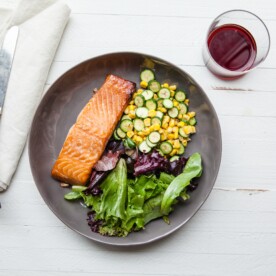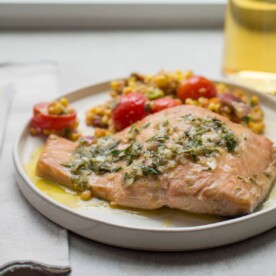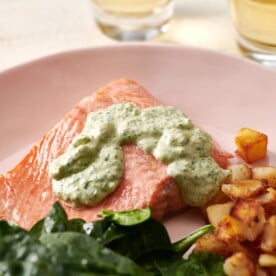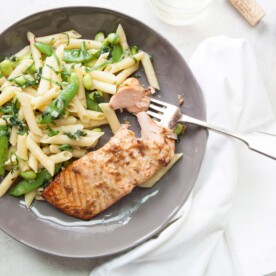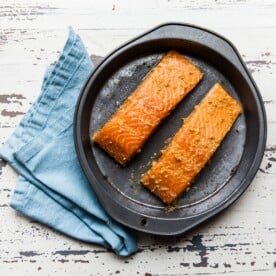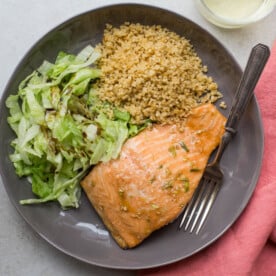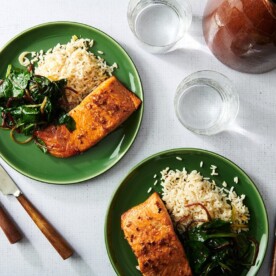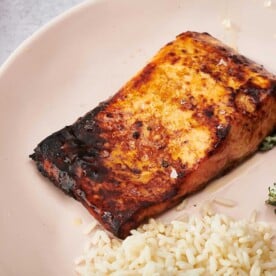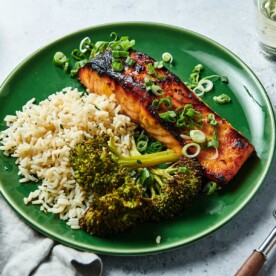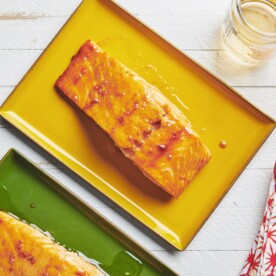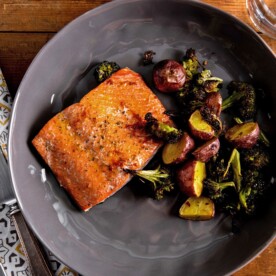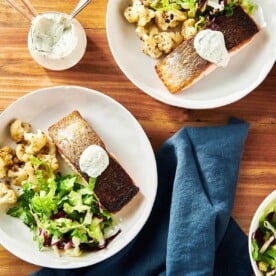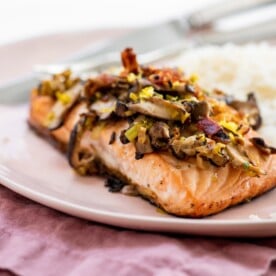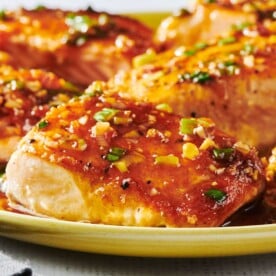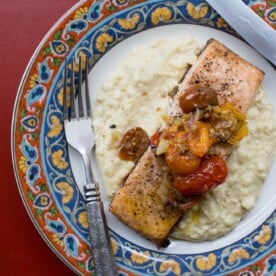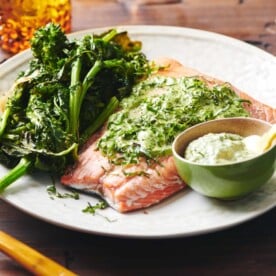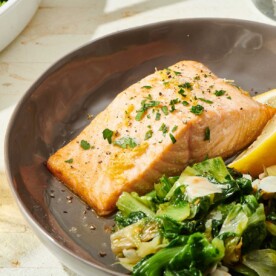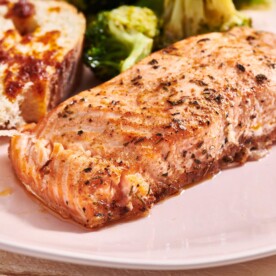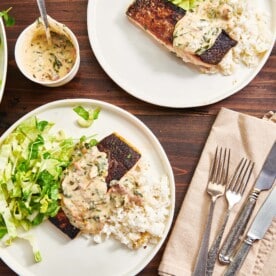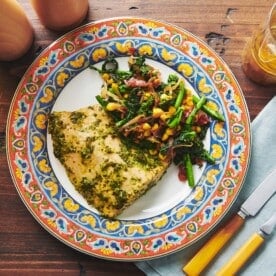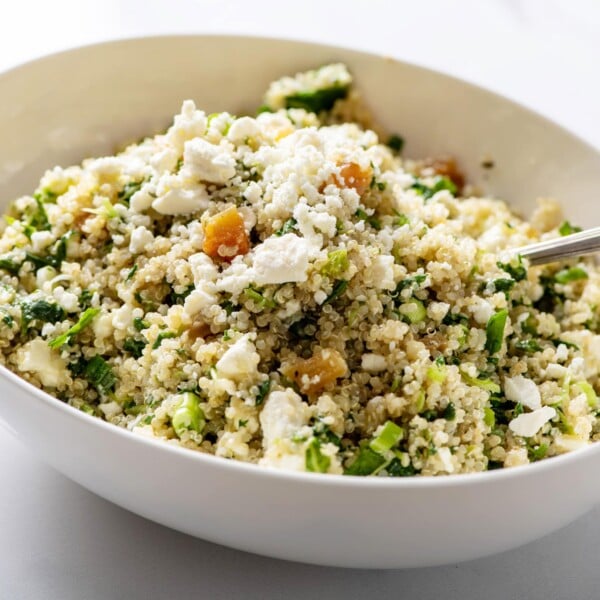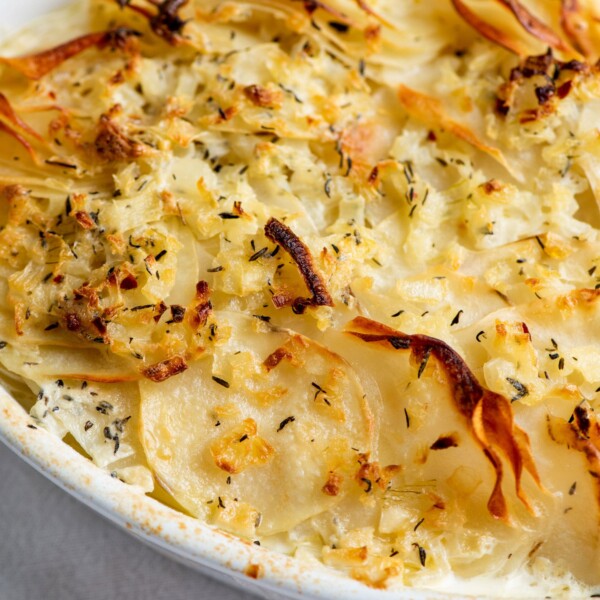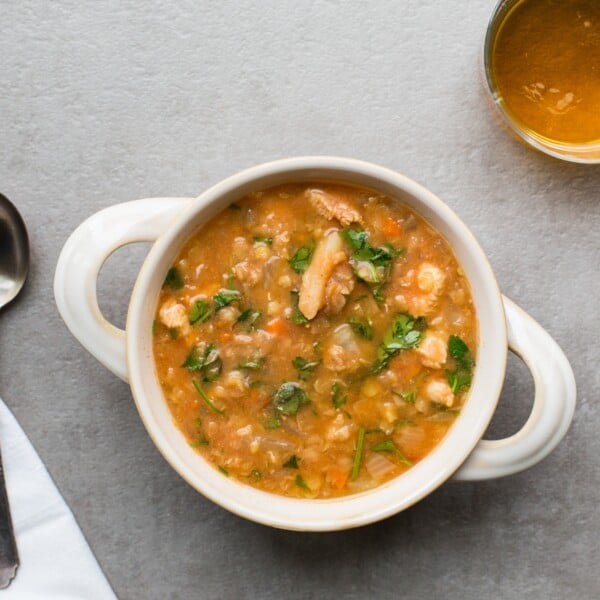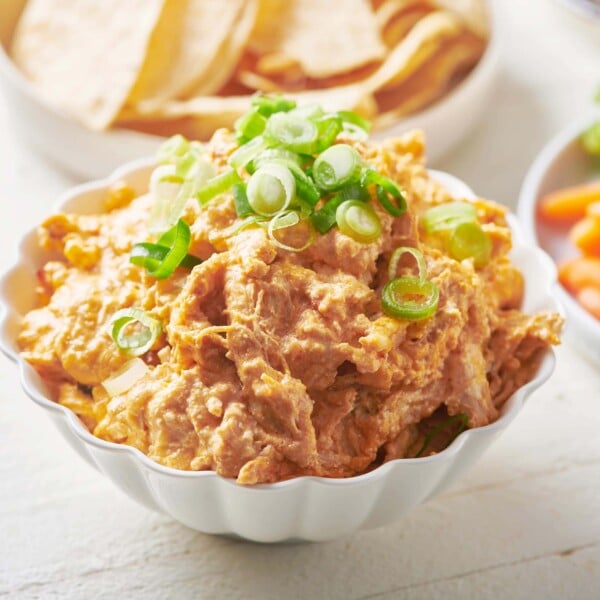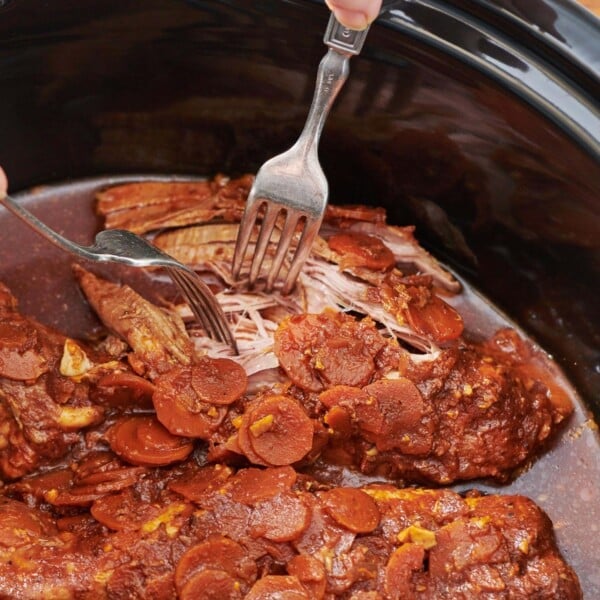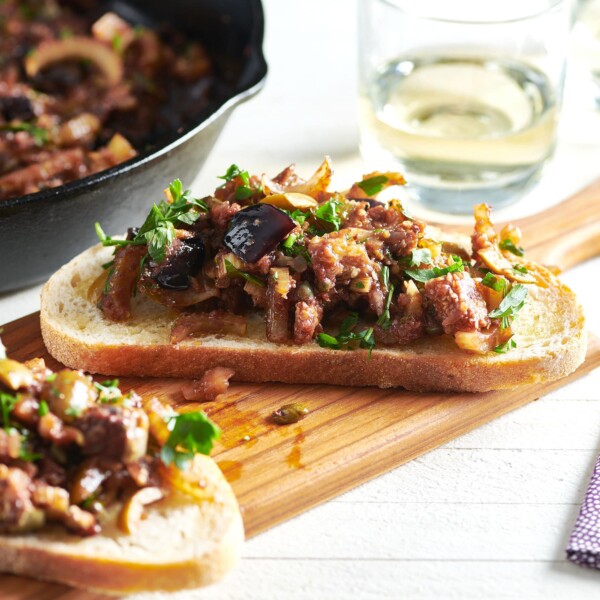20 Super Simple Weeknight Salmon Dinner Recipes
on Dec 12, 2018, Updated Apr 03, 2024
This post may contain affiliate links. Please read our disclosure policy.
Salmon lends itself perfectly to flavorful, fast, and easy weeknight fish dinners. Try this 30-minute citrusy salmon with a creamy sauce for your next salmon meal.
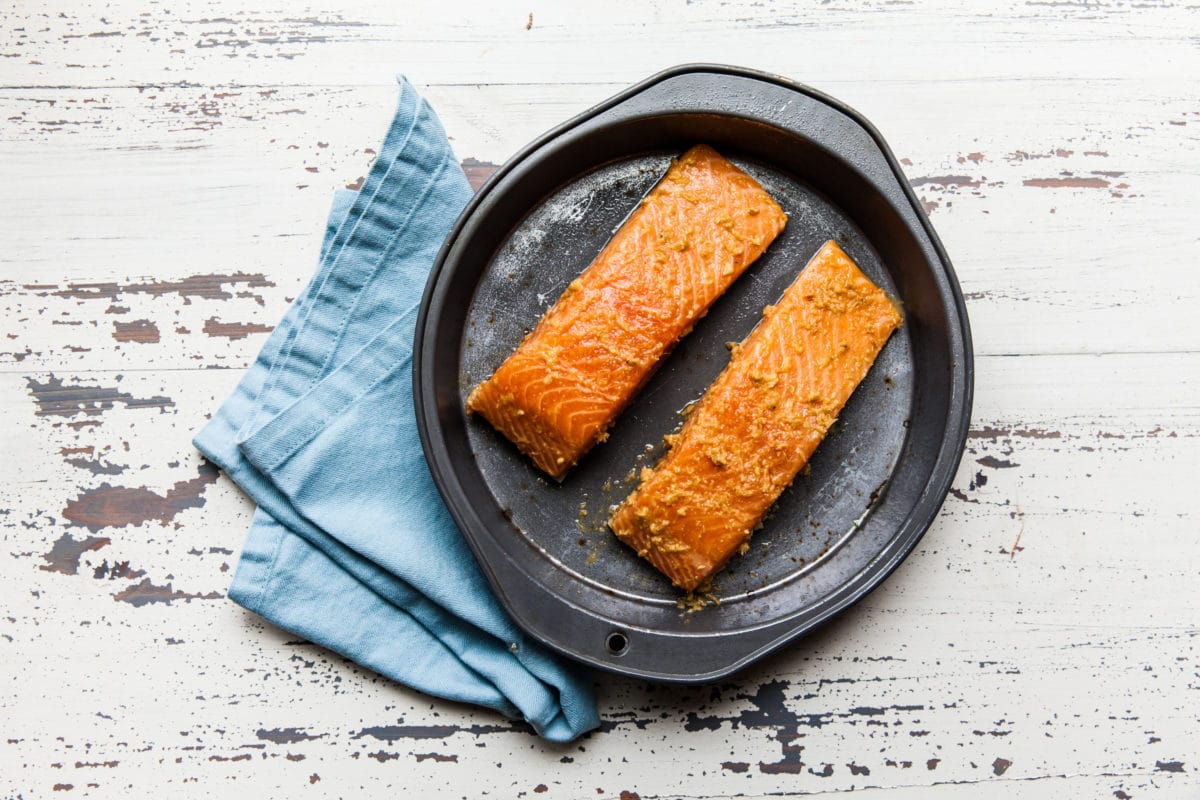
We never get tired of salmon, but we always need new ideas for easy salmon recipes for dinner! Salmon has great flavor and silky richness, and it’s extremely versatile. It’s my go-to fish for weeknight dinners. And it’s definitely considered a superfood with its high levels of healthful Omega-3 fatty acids (the good-for-you fat).
And so many great sides go with salmon. Of course, it depends on how you are seasoning or saucing your fish, what season it is, and whether you’re using the oven or firing up the grill. Below you’ll find lots of sides paired with the salmon recipes. But you can never go wrong with rice and a simple green salad.
Make sure you are buying salmon at a market with high turnover or, better still, a fish store or grocery with a good fish counter. See below for lots of tips on how to choose the most sustainable and freshest salmon when you shop.
On a busy weeknight, a salmon dish can be one of the fastest dinners around. It takes well to almost every kind of cooking treatment — sautéing, baking, roasting, poaching. And, you can’t get bored with it because you can shower this fish with seasonings from any cuisine: Asian, Mediterranean, and any version of “New American” ingredients. I don’t even know what I mean by that, but I guess I’m thinking of salmon dishes that you would find in a cool neighborhood restaurant.
Below you’ll find a slew of ideas for weeknight salmon dinners and also a recipe for a simple citrus-marinated salmon with a bright creamy sauce that takes less than 30 minutes to get on the table. Plus, it includes only 3 ingredients beyond the salmon! What are you waiting for?
Table of Contents

Salmon is extremely versatile, and these easy dinner recipes will perk up the weeknight dinner rotation.
Tweet This
What Kind of Salmon to Buy
Salmon is available everywhere because it’s so damn good and so damn popular. You can use farmed salmon or seek out wild Alaska salmon when it’s in season. There are a whole bunch of varieties to choose from Coho to King to Sockeye — explore the different types to see which you like best.
Also, importantly, different types of salmon have different levels of sustainability. Seafood Watch is a good resource for checking to see if the fish you are buying is environmentally friendly. You can buy sustainably raised fish that is line-caught and also some that are farmed. But where it’s harvested and how it’s farmed make a difference, so get to know the market!
Wild Alaska salmon has a more pronounced flavor than farm-raised, so you’re getting the full salmon experience. And the Alaskan seafood folks are extremely vigilant about sustainability and harvesting practices. So, you know you’re eating salmon that has no growth hormones, artificial coloring, preservatives, or additives that you might be concerned about.
How to Cook Salmon
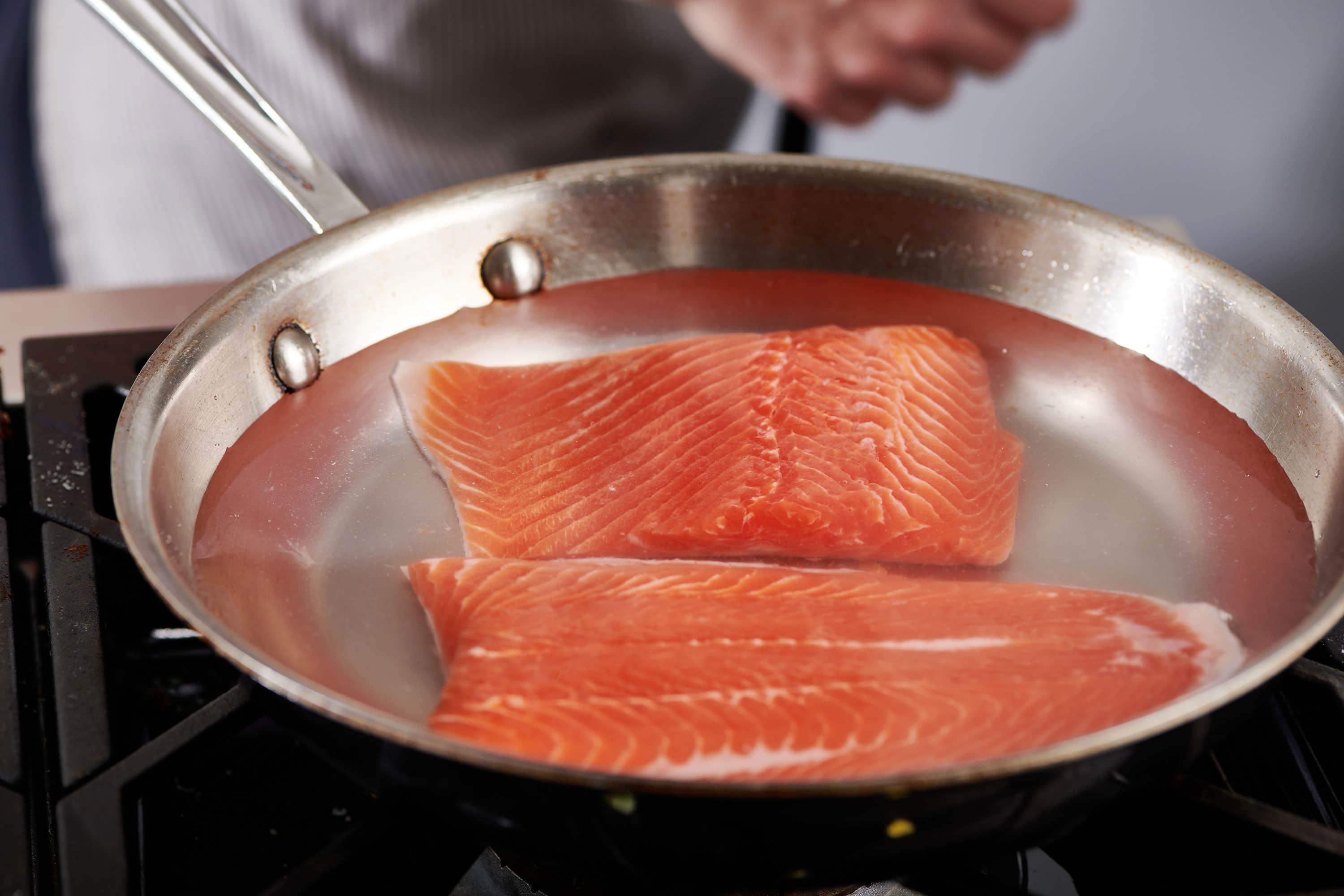
Let’s start with three of the most popular ways to cook salmon. Here’s everything you need to know about:
How to Cook Salmon Without Flipping It
I love starting fish in a pan and then transferring it to the oven to finish cooking. Make sure your fish is fairly thick for this method (about 1 inch or even thicker) so it doesn’t overcook or dry out. Here are the three main reasons why:
- You can use the oven to cook something else to go with the fish — whether it’s roasted potatoes or other vegetables. They can be started before the fish finishes cooking in the oven.
- Starting the fish in the pan means that if you are cooking fish with the skin on it, you can get a really crispy skin. Make sure your pan is very hot, and then place the fish in the pan skin side down. The skin will get nice and crispy against the hot pan.
- You don’t have to flip the fish, which, even for the most confident and experienced cooks, doesn’t always end well.
Salmon Cooking Tips
- If possible, buy filets of similar thicknesses so they cook at the same time. If you have some thinner filets, you will probably want to take them off the heat earlier than the thicker ones.
- For a few extra dollars, you can buy the filets from the center of the fish, which are thicker and more uniform in size.
- To thaw frozen salmon, place it well-wrapped in the fridge overnight to defrost. If the packaging isn’t airtight, place a plate under the salmon to catch any drips. If you are in a rush, place the salmon in an airtight zip-top bag and place the bag in a bowl or sink of ice water. The salmon should defrost in a couple of hours. Do not defrost salmon at room temperature; that could encourage bacteria to grow.
How to Know When Salmon is Done
Fully cooked salmon will be opaque throughout and flake easily with a fork.
The FDA recommends a safe internal temperature of 145 degrees for fish and shellfish. However, if you are using fresh, high-quality fish, you can cook it to medium-rare (135 degrees internal temperature).
Tips for Marinating Salmon
One of the many good things about seasoning fish and seafood is how quickly they absorb flavors. Therefore, you never want to marinate any fish or seafood for too long because you don’t want to overpower the delicate deliciousness of the fish itself.
- Most salmon recipes should marinate in the fridge for between 1 and 2 hours, but follow the recommendations in your specific recipe.
- Any acidic ingredients in the marinade (like citrus juice or vinegar) can also start to cure or “cook” the fish after enough time goes by. That can affect the firm and flaky texture of the salmon.
- If you don’t have the hour-plus to marinate the salmon in the fridge, just leave it out for 15 minutes at room temperature. A short room temperature marinating is safe; just don’t let it sit out for much longer than that.
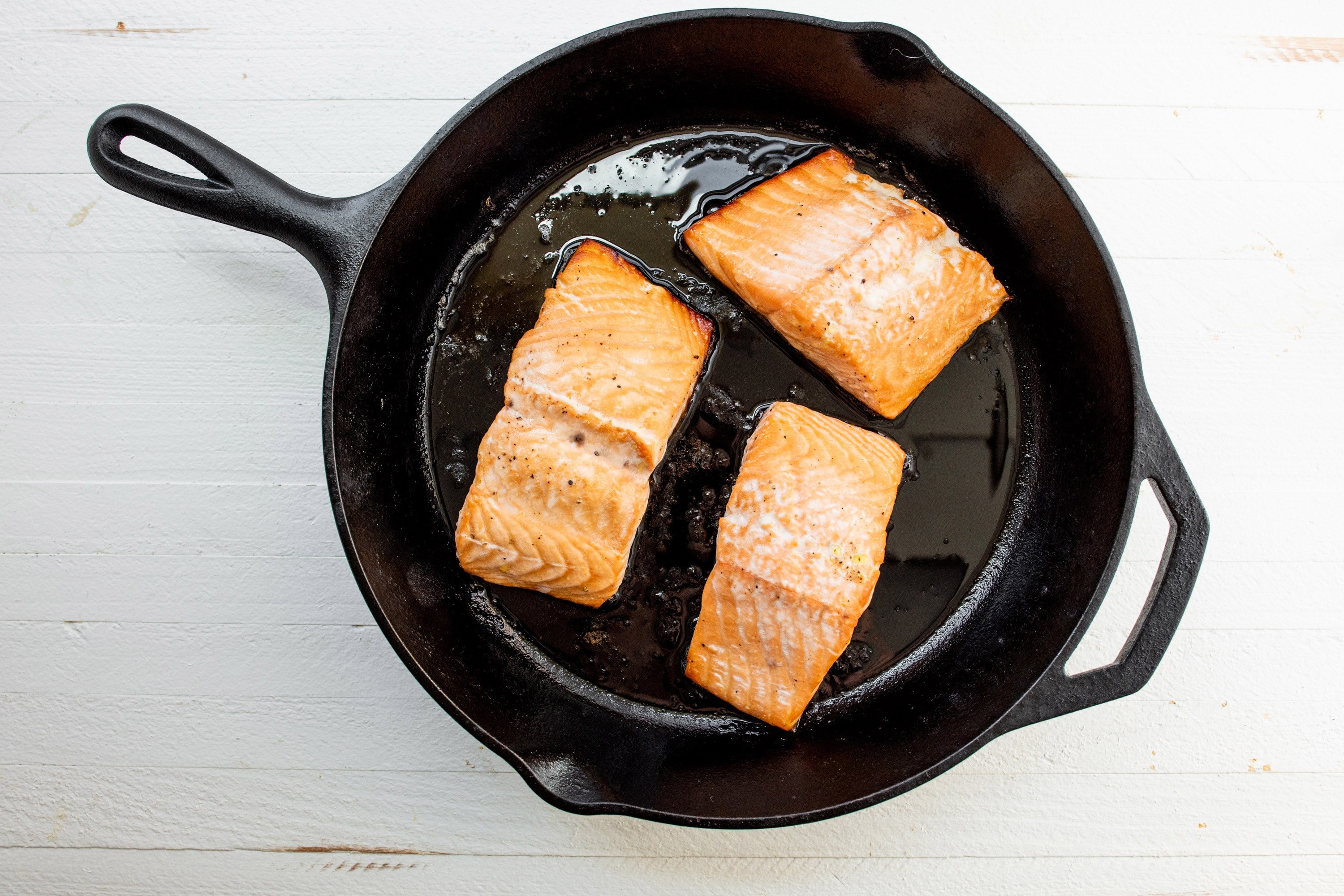
Salmon Cooking Times
The chart below shows the approximate cooking times for (6 to 8-ounce) salmon filets, about 1 ½ inches thick, to different levels of doneness.
| Level of Doneness | Total Cooking Time |
|---|---|
| Rare (dark pink in the center) | 7 to 9 minutes |
| Medium-Rare | 12 to 16 minutes |
| Medium | 10 to 13 minutes |
| Medium-Well | 11 to 14 minutes |
| Well Done | 12 to 15 minutes |
If you like your salmon cooked all the way through, that’s super fine, cook it how you like it. I have a vivid memory of being at a very fancy restaurant, and the waiter brought my friend a brick-sized cut of barely seared tuna. My friend sent it back, asking that it be cooked all the way through. The waiter huffily removed the fish and returned it several minutes later. Cooked exactly the same way. Clearly, the chef was having none of this “cooked through” business, but here’s the thing — who was eating the fish, the chef or my friend?
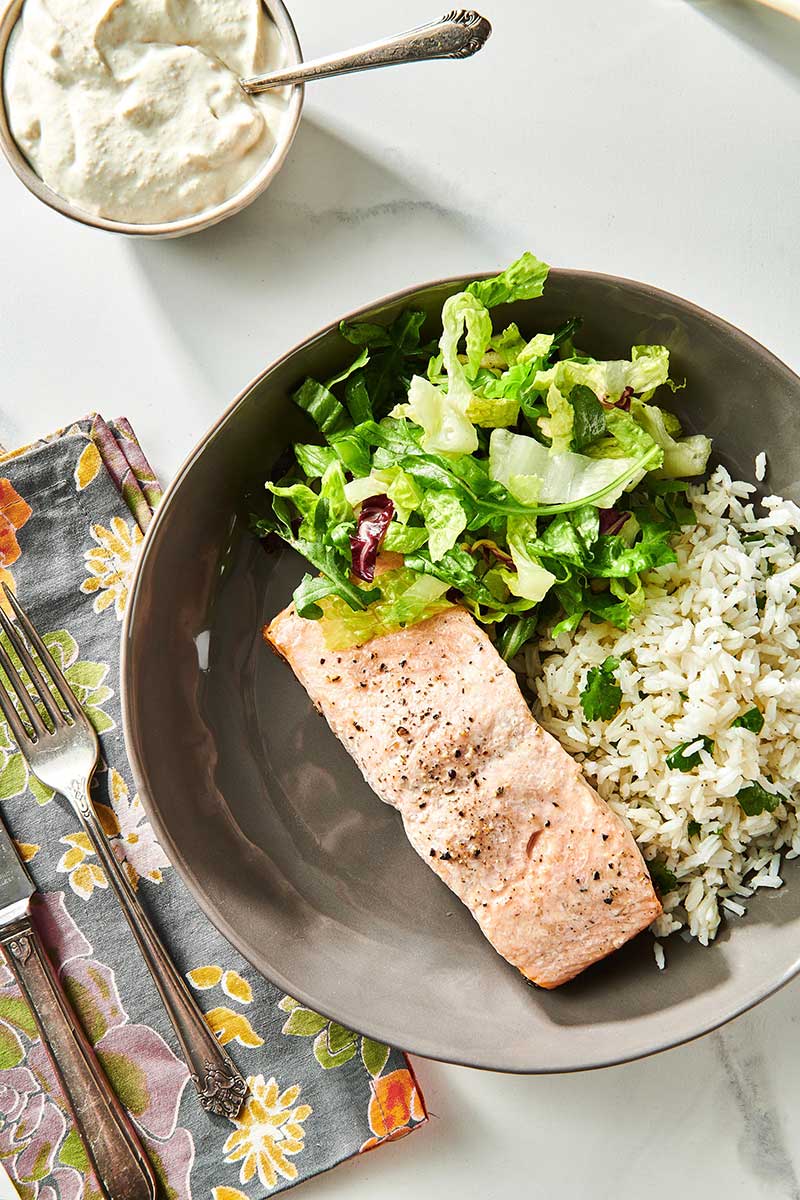
FAQs
No, and please don’t! Some cooks worry that there might be bacteria on the fish, but any bacteria will be destroyed when the fish is cooked.
In actuality, washing your fish increases the risk of spreading bacteria. This is because the sink and anything that gets splashed by the salmon-rinsing water could get contaminated. Another reason is that unless you dry the salmon completely, it will prevent any marinade from sticking to the fish. It will also prevent it from browning when seared or roasted.
Salmon often benefits from marinating, gaining extra flavor. Follow the recipe instructions, and don’t marinate salmon for too long, which could affect the texture of the fish. If you need to get that fish into the oven or pan pronto, then try to marinate the fish for 15 to 20 minutes at room temperature. This allows the fish to absorb some of the marinade flavors.
When you don’t even have time for that, still coat the fish with the marinade. You’ll taste the flavors, but it just won’t penetrate the fish as deeply. You can also reserve some of the marinade (don’t let it touch the fish) and drizzle it over the cooked fish at the end as a kind of sauce.
It depends on the recipe! If you are cooking the fish in a pan, you may need to flip it for even cooking. Another option is to cover the pan for part of the cooking to trap the heat and allow the top to cook through before the bottom overcooks.
If you are transferring the pan to the oven, then, no, you do not need to flip the salmon. And if you are cooking fish in the oven, then no need to flip in most cases.
That also depends! I like cooking the fish in the oven at a higher temp, which is nicely hands-off. It’s also great to start the fish in the pan and transfer it to a preheated oven (and usually, something else is roasting in there already!).
Either one is fine, though the salmon will bake a bit faster at the higher temperature (that stands to reason, right?). I usually make the decision based on what else I am cooking in the oven since all you have to do is adjust the cooking time, and you’ll still get perfectly cooked salmon at either temperature.
20 Easy Salmon Dinner Recipes
Here are a bunch of salmon recipes to keep dinner interesting for a while!
Simple Asian Salmon
Poached Salmon with Cilantro Sauce
Horseradish Ginger Salmon
Thai Salmon
Hoisin-Glazed Salmon
Teriyaki Salmon
Air Fryer Salmon
Miso Salmon
Honey Ginger Salmon
Salmon, Potato, and Broccoli Sheet Pan Supper
Crispy-Skinned Salmon with Dill Sauce
Orange Salmon with Leeks and Mushrooms
Ginger Lemongrass Salmon
Salmon with Polenta and Warm Tomato Vinaigrette
Sheet Pan Salmon and Broccoli Rabe
Salmon with Lemon Butter Sauce
Dedie’s Herbed Salmon
Creamy Tuscan Salmon
Salmon with Chimichurri Sauce
Side Dishes for Salmon Dinners
Obviously, the side dishes you choose will depend on the salmon recipe itself. When in doubt, go with a simple starch like rice, roasted potatoes, or orzo and a simple sautéed, steamed, or roasted green vegetable. Here are a few basics to consider!
Pin this now to find it later
Pin ItCitrus Salmon
This recipe couldn’t be easier. If you don’t have the time to marinate the fish, it will still be delicious, though the flavors won’t penetrate so deeply. And the creamy citrusy sauce comes together in 5 minutes and echoes the flavors of lemon and orange in the marinade.
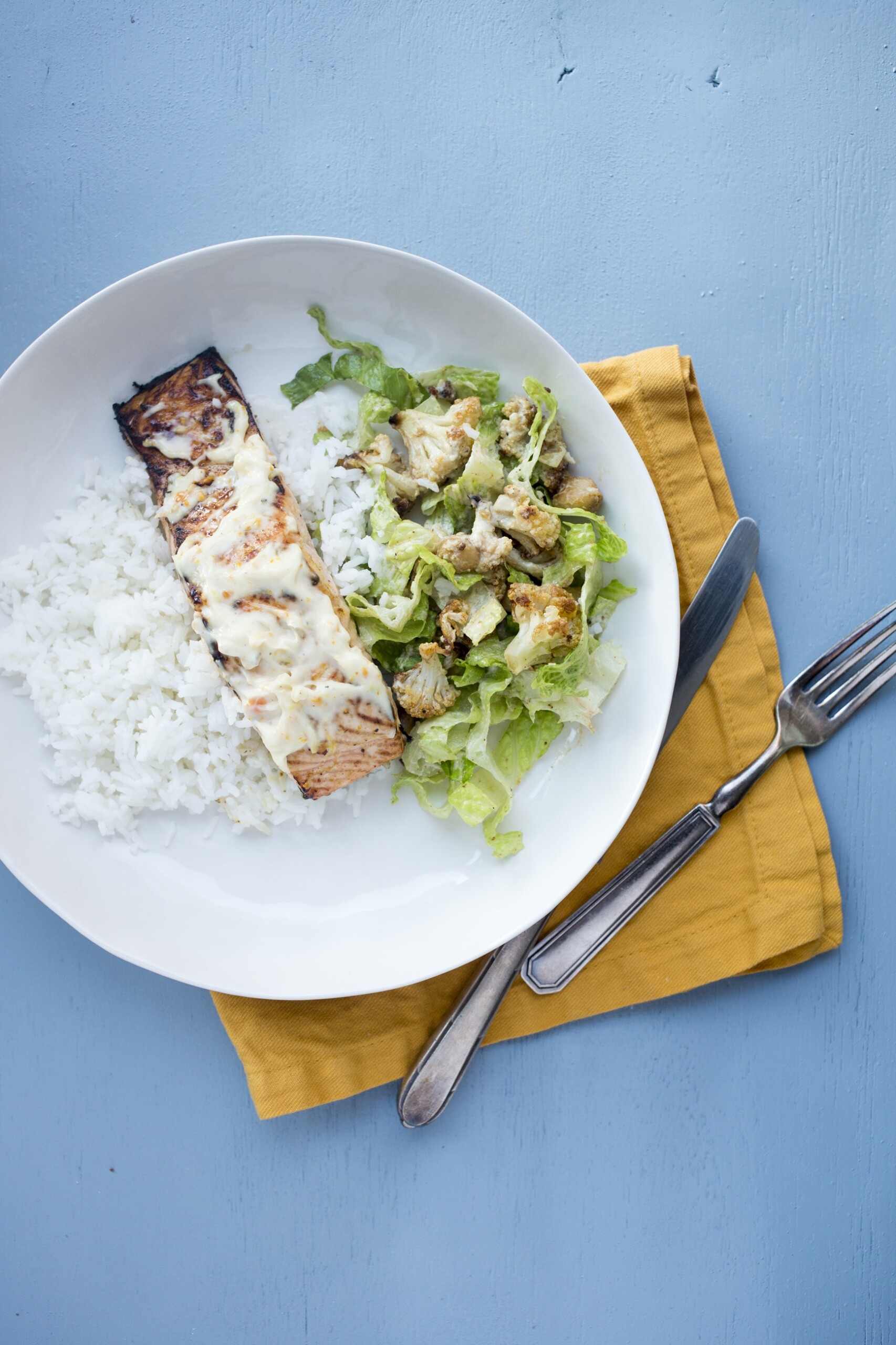
Serve this with rice or potatoes and some Brussels sprouts, green beans, or a crisp salad (maybe with some roasted veggies tossed in) for a colorful and healthful meal.
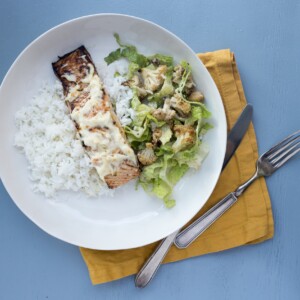
Easy Weeknight Citrus Salmon Dinner
Ingredients
- 1 lemon
- 1 orange
- 4 (6- to 8-ounce) salmon fillets
- 3 tablespoons olive oil
- ¼ cup mayonnaise (regular or low-fat)
- Kosher salt and freshly ground pepper (to taste)
Instructions
- Zest and juice both the lemon and the orange. Mix together two zests, then remove 1 teaspoon of the combined zest and set aside. In a small bowl, whisk together the olive oil, and the citrus juices, along with the remaining zest. Season the marinade with salt and pepper. Place the salmon fillets in a baking pan, and pour the marinade over the fish, turning to coat evenly. Marinate in the refrigerator for 1 hour.
- Meanwhile, combine the mayonnaise and the reserved teaspoon of zest and season with salt and pepper. Set aside.
- Preheat the broiler. Transfer the salmon to an oiled, rimmed baking sheet, separating the pieces. Discard the marinade.
- Broil the salmon for 8 to 10 minutes until it is just cooked through (the fish will continue to cook a bit after it is removed from the oven, so take it out just before it’s done to your liking), and remove from the oven. Transfer to individual plates, and top each piece with a spoonful of the sauce.
Notes
- Any acidic ingredients in the marinade (like the citrus juice in this recipe) can start to cure or “cook” the fish after enough time goes by. That can affect the firm and flaky texture of the salmon. Don’t let your salmon marinate too long.
- If you don’t have the hour-plus to marinate the salmon in the fridge, just leave it out for 15 minutes at room temperature. A short room temperature marinating is safe; just don’t let it sit out for much longer than that.
